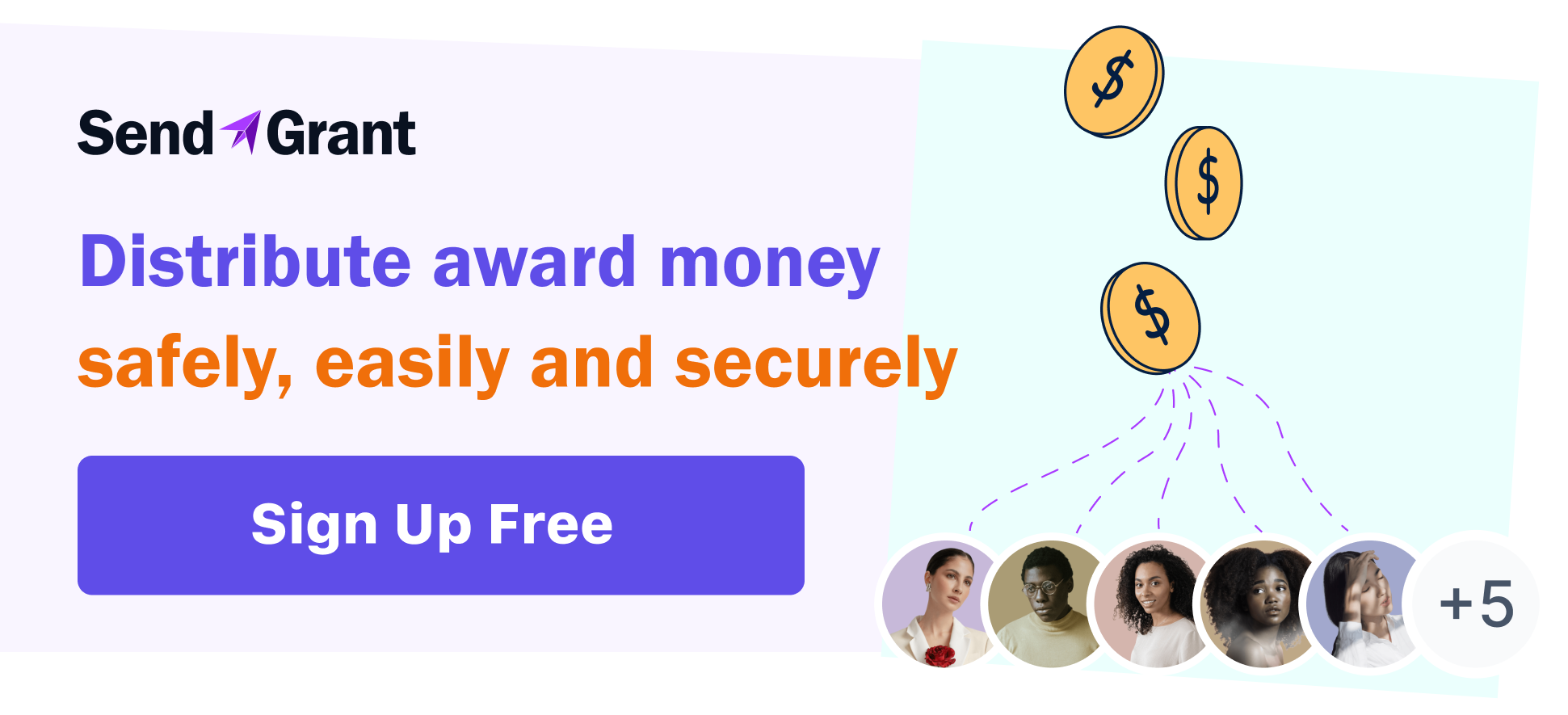How to Define a Grant Disbursement Policy
Are you struggling with defining a grant disbursement policy for your organization? You're not alone. Many grant managers find it challenging to create clear rules for giving out funds. A well-defined policy is crucial for smooth operations and accountability. It helps ensure that money goes to the right people at the right time. This guide will walk you through the key steps to create a solid grant disbursement policy. Let's dive in and make your grant process more efficient and effective.
Why Your Organization Needs a Crystal-Clear Grant Disbursement Policy
Let's start by addressing the elephant in the room: why bother with a detailed grant disbursement policy? Well, it's simple. A clear policy is the backbone of any successful grant program.
A well-defined policy ensures consistency. When everyone knows the rules, there's less room for confusion or favoritism.
Secondly, it boosts transparency. In the world of grants, transparency is king. A clear policy shows that you're operating above board, which builds trust with both grantees and donors.
Lastly, a solid policy saves time and reduces stress. When guidelines are clear, you spend less time answering questions and more time actually making an impact. Everything runs smoother when the parts know what they're supposed to do.
Mapping Out Your Money: Establishing Disbursement Schedules
One of the most important steps in creating your policy is establishing disbursement schedules. This is basically deciding when and how often you'll be handing out the cash.
Think of it as though you’re planning a road trip. You need to decide where you're going to stop and refuel. Some grants might work best with a lump sum payment at the start. Others might need a series of smaller payments spread out over time. It all depends on the nature of the project and the needs of your grantees.
Consider factors like the grant's duration, the project's milestones, and any reporting requirements. You might decide to tie payments to specific achievements or deadlines. For instance, you could release funds after receiving progress reports or when certain project phases are completed.
Flexibility can be your friend here. While it's important to have a standard schedule, be prepared to adjust for unique situations. Maybe a grantee needs a larger initial payment to get their project off the ground. Or perhaps you want to hold back a portion of the funds until the final report is submitted. Your policy should outline these possibilities while still maintaining a clear default schedule.
Who Gets the Funds? Defining Eligibility Criteria
Who can actually receive your grants? This is where you set the bar for eligibility, and it's crucial to get it right.
Start by outlining the basic requirements. These might include things like:
- The type of organization (non-profit, educational institution, etc.)
- Geographical location, or
- Specific focus areas that align with your mission.
Be as specific as possible to avoid any gray areas.
Consider including both 'must-have' and 'nice-to-have' criteria. For example, a 'must-have' might be that the organization is a registered non-profit, while a 'nice-to-have' could be previous experience managing similar projects.
Don't forget to address any disqualifying factors. Are there certain types of organizations or activities that you won't fund? Spell these out clearly to save everyone time and avoid confusion.
Your eligibility criteria should reflect your organization's values and goals. They're how you ensure your funds are going to projects and organizations that align with your mission.
The Green Light Process: Setting Up Approval Procedures

Now let's talk about how you decide who actually gets the grant. This is where your approval process comes in.
First, outline the steps in your approval process. This might include an initial screening, a detailed review, and a final decision phase. Be clear about who's involved at each stage. Is it a committee decision? Does the board need to sign off on grants over a certain amount?
Consider implementing a scoring system to evaluate applications objectively. This could be based on factors like project feasibility, potential impact, and alignment with your organization's goals.
Don't forget to set timelines for each stage of the process. Applicants will appreciate knowing when they can expect to hear back.
Lastly, make sure your policy includes provisions for dealing with conflicts of interest. What happens if a board member is connected to an applicant? Having clear guidelines for these situations helps maintain the integrity of your process.
Keeping the Books Straight: Implementing Financial Controls
Now we're getting into the nitty-gritty of grant management – financial controls. This might not be the most exciting part of your policy, but it's absolutely crucial. Think of it as the security system for your grant program – it helps prevent fraud, ensures funds are used correctly, and keeps everything above board.
Outline the documentation you'll require from grantees first. This might include detailed budgets, regular financial reports, and receipts for expenses. Be clear about what format you need these in and how often you expect to receive them.
Consider implementing a system of checks and balances. This might involve having multiple people sign off on disbursements or conducting regular audits.
Don't forget to address how you'll handle changes to a project's budget. Will you require approval for significant changes? What's your process for reallocating funds within a grant?
Lastly, make sure your policy includes guidelines for record-keeping. How long will you keep financial records? Who has access to this information? Clear rules here not only help with accountability but can also be crucial for tax purposes and future audits.
When Things Go Sideways: Addressing Non-Compliance Scenarios
Even with the best-laid plans, sometimes things don't go as expected. That's why your policy needs to address what happens when grantees don't follow the rules.
Start by clearly defining what constitutes non-compliance. This could range from missing reporting deadlines to misusing funds. Be as specific as possible to avoid any ambiguity.
Outline a graduated response system. For minor infractions, you might start with a warning. For more serious issues, you might need to suspend funding or even require repayment of the grant.
Consider including a process for grantees to appeal decisions or correct non-compliance issues. This shows that you're fair and willing to work with grantees to resolve problems.
Don't forget to address how you'll document and track non-compliance issues. This can be important for future grant decisions and for maintaining the integrity of your program.
Keeping Everyone in the Loop: Integrating Reporting Requirements
Reporting is a crucial part of any grant program. It's how you track progress, ensure accountability, and measure impact.
The first thing you want to do here is outline what types of reports you'll require. This might include progress reports, financial reports, and final project reports. Be clear about the frequency of these reports and what information they should contain.
Consider providing templates or guidelines for reports. This not only makes it easier for grantees but also ensures you're getting the information you need in a format that's easy to review.
Don't forget to address how you'll use these reports. Will they be used to make decisions about future funding? Will they be shared with donors or the public? Being transparent about this can help grantees understand the importance of thorough and accurate reporting.
Lastly, make sure your policy includes deadlines for submitting reports and consequences for late or missing reports. This helps ensure you're getting the information you need when you need it.
One Size Doesn't Fit All: Ensuring Policy Flexibility for Different Grant Types
While having a standard policy is important, it's equally crucial to build in some flexibility. Different types of grants may need different approaches. It's like having a basic recipe that you can adjust based on the ingredients you have – the core stays the same, but you can tweak it as needed.
Identify the different types of grants your organization offers. These might include project grants, operating grants, capital grants, or research grants. Each of these may have unique requirements or considerations.
Outline how your basic policy might be adjusted for each grant type. For example, a research grant might need more frequent progress reports, while a capital grant might require different financial documentation.
Consider creating addendums or subsections in your policy for each grant type. This allows you to maintain a consistent overall structure while addressing the specific needs of different grants.
Don't forget to include a process for reviewing and updating your policy. As you work with different types of grants, you may find areas that need adjustment. Having a regular review process ensures your policy stays relevant and effective.
Putting It All Together: Executing Your Policy with SendGrant

With your comprehensive grant disbursement policy in place, it's time to put it into action. Tools like SendGrant can streamline this process, offering a centralized platform for managing applications, tracking disbursements, and collecting reports.
SendGrant's security features help implement strong financial controls, allowing you to set up approval workflows, track transactions, and maintain a clear audit trail. It also facilitates easy communication with grantees through automated notifications.
While SendGrant can make executing your policy easier, remember that a well-thought-out policy remains the foundation. By combining a solid policy with efficient tools, you can create a transparent, effective grant program that serves your organization and grantees well.



